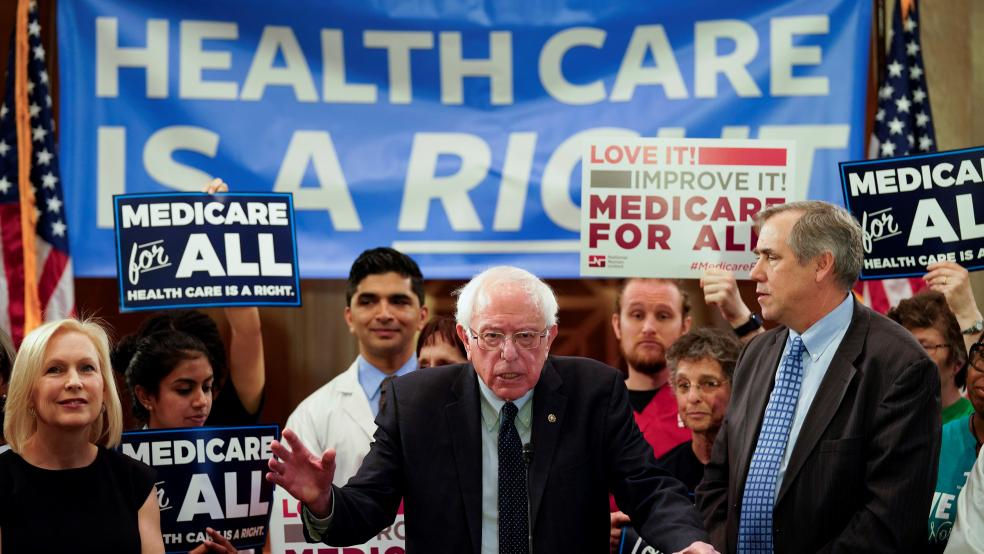Facing questions about how he intends to pay for an ambitious policy agenda that includes single-payer health care, student debt cancellation and an expansion of Social Security, Vermont Sen. Bernie Sanders on Monday night released a list of financing proposals.
The list – titled “How Does Bernie Pay for His Major Plans?” – provides some cost estimates for Sanders’ major plans and funding options to pay for them. Details are limited, though, and critics have raised questions about whether the numbers add up and square with mainstream cost and revenue projections.
Here are some of the numbers Sanders provided for key programs:
Tuition-free college and student debt cancellation: The Sanders campaign says it will cost $2.2 trillion over the next decade to eliminate tuition at public colleges and trade school, and to cancel all student debt. A “modest tax on Wall Street speculation” – separately defined as an 0.5% tax on stock trades, an 0.1% tax on bond trades, and an 0.005% tax on derivatives trades – is projected to raise $2.4 trillion over that time period.
Universal childcare and pre-K: The $1.5 trillion cost is to be covered by a graduated wealth tax on net worth exceeding $32 million, projected to raise $4.35 trillion.
Green New Deal: His extensive proposal to address climate change would cost an estimated $16.3 trillion, to be paid for by new taxes on the fossil fuel industry, selling green energy, cutting defense spending, raising corporate tax rates and collecting income taxes on millions of new green energy-related jobs.
Expand Social Security: Sanders wants to increase benefits for low-income seniors by about $1,300 a year. Although he doesn’t provide a cost estimate for doing so, Sanders says he can pay for the plan by raising Social Security taxes on “the wealthiest 1.8 percent of Americans,” with the revenues extending the solvency of the program until 2070.
Medicare for All: Multiple analyses have estimated the additional federal cost of Sanders’ single-payer health plan at roughly $30 trillion over 10 years, a number the senator cited in his interview with “60 Minutes” on Sunday. But his new funding list cites a lower figure of $17.5 trillion in new costs over a decade, which he pays for with a variety of new taxes, including ones on employees (raising $4 trillion), employers ($5.2 trillion), capital gains ($2.5 trillion) and corporations ($1 trillion).
Emma Kinery of Bloomberg News said the revenue options fail to cover the previously cited total cost of Medicare for All. “Sanders has not disputed estimates that his Medicare for All will cost $30 trillion over the next decade, but his document only accounts for about $17.5 trillion,” Kinery wrote Tuesday.
More broadly, Ben Ritz of the centrist Progressive Policy Institute said that if all of Sanders’ agenda were to pass, the funding shortfall would come to about $10 trillion under the senator’s own accouting, and even more if more realistic estimates were used. “After reconciling Sanders’ latest list of pay-fors with these independent estimates, PPI concludes that even if Congress were to adopt every single revenue option Sanders has offered for consideration, it would fall almost $25 trillion short of his proposed spending increases over the next decade – leaving a gap nearly equal to the total value of all goods and services produced by the U.S. economy in one year,” Ritz said.




